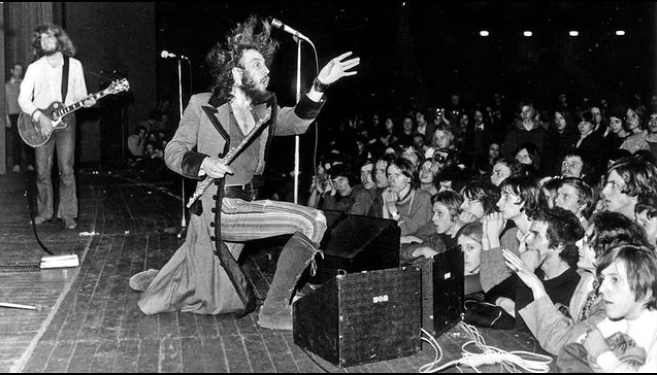Jethro Tull, an English rock ensemble, invented a distinct form of progressive rock with folk influences. Lead singer and flutist Ian Anderson founded the group in 1967, and they soon gained notoriety for their ground-breaking sound and distinctive musical aesthetic.
Jethro Tull was renowned for their complex instrumentation and for fusing folk, classical, and blues music styles into their rock sound. The group established many progressive rock genre trends and had a significant impact on many bands that came after them.
A song that defined their talents and refined Anderson’s flute style was Aqualung. The song features a platformer riff and is performed in Anderson’s signature dramatic style. Without skipping a step, the music alternates between fast and slow sections.
Aqualung is the name of a famous rock hymn that shines its own light on popular music from the 1970s. It is more than just the name of Jethro Tull’s fourth studio album or the title of the first half of that album. With its unpredictably shifting moods and textures, as well as its clever and thought-provoking words, “Aqualung” is a musical masterpiece. It has been covered by many different musicians over the years and is still a mainstay of classic rock radio. It is a timeless classic.
According to Rock Pasta, The testimony of Ian Anderson’s first wife, Jennie Franks, who was enrolled at the School of Art at the time, is fascinating and illuminating in this respect. When Jennie was photographing some homeless members of Victoria’s Salvation Army for a class project one day in 1971, she was astonished to hear them describe how they all quickly transitioned from living normal, productive lives to ones in which they had to scavenge for food scraps in parks. One homeless man, in particular, caught her attention, and she even struck up a friendship with him. When the exhibition was over, she offered to give him the photographs she had taken of herself, but the man regarded the suggestion with skepticism. Therefore, the album’s cover image.
Acoustic guitar, Anderson’s trademark flute playing, a variety of percussion, synthesizers, and other effects are all used in the instrumentation to create a sonic environment that is both lighthearted and somber. Ian Anderson, the creator of everything we are about to consume, tells us about Mr. Aqualung, the endearing homeless man depicted on the cover who has no choice but to observe the girls pass by while harboring ill will. Amazing pace changes combined with a frantic solo that ranks among the finest we’ve ever heard.
Anderson’s flute creates a distinctive saxophone-like sound in the composition, which draws inspiration from jazz and classical music. The track, which can be found on the record Aqualung, became the band’s unmistakable sound. The timeless standard Aqualung has been covered by a wide range of musicians over the years and is still a mainstay of classic rock radio.

